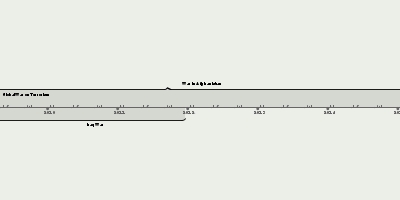Yalta Conference (4 fev 1945 ano – 11 fev 1945 ano)
Descrição:
The Yalta Conference was the meeting of the heads of government of the United States, the United Kingdom, and the Soviet Union to discuss the postwar reorganization of Germany and Europe. The three states were represented by President Franklin D. Roosevelt, Prime Minister Winston Churchill, and General Secretary Joseph Stalin. The conference was held near Yalta in Crimea, Soviet Union, within the Livadia, Yusupov, and Vorontsov palaces.The aim of the conference was to shape a postwar peace that represented not only a collective security order, but also a plan to give self-determination to the liberated peoples of Europe. Intended mainly to discuss the re-establishment of the nations of war-torn Europe, within a few years, with the Cold War dividing the continent, the conference became a subject of intense controversy.
The key points of the meeting were as follows:
1) Agreement to the priority of the unconditional surrender of Nazi Germany. After the war, Germany and Berlin would be split into four occupied zones.
2) Stalin agreed that France would have a fourth occupation zone in Germany if it was formed from the American and the British zones.
3) Germany would undergo demilitarization and denazification. At the Yalta Conference, the Allies decided to provide safeguards against a potential military revival of Germany, to eradicate German militarism and the Nazi general staff, to bring about the denazification of Germany, to punish the war criminals and to disarm and demilitarize Germany.
4) German war reparations were partly to be in the form of forced labor. The forced labor was to be used to repair damage that Germany had inflicted on its victims. However, laborers were also forced to harvest crops, mine uranium, and do other work.
5) Creation of a reparation council which would be located in the Soviet Union.
6) The status of Poland was discussed. The recognition of the communist Provisional Government of the Republic of Poland, which had been installed by the Soviet Union "on a broader democratic basis", was agreed to.
7) The Polish eastern border would follow the Curzon Line, and Poland would receive territorial compensation in the west from Germany.
8) Stalin pledged to permit free elections in Poland.
9) Roosevelt obtained a commitment by Stalin to participate in the United Nations.
10) Stalin requested that all of the 16 Soviet Socialist Republics would be granted UN membership. That was taken into consideration, but 14 republics were denied; Roosevelt and Churchill agreed to membership for Ukraine and Byelorussia. While Roosevelt requested additional votes, with Churchill agreeing in principle and Stalin suggesting two addition votes so as to be equal to the Soviet Union, the United States ultimately did not request more than one vote.
11) Stalin agreed to enter the fight against the Empire of Japan "in two or three months after Germany has surrendered and the war in Europe is terminated". As a result, the Soviets would take possession of Southern Sakhalin and the Kuril Islands, the port of Dalian would be internationalized, and the Soviet lease of Port Arthur would be restored, among other concessions.
12) For the bombing of Japan, agreement was reached on basing U.S. Army Air Force B-29s near the mouth of the Amur River in the Komsomolsk-Nikolaevsk area (not near Vladivostok, as had earlier been proposed), but that did not eventuate. General Aleksei Antonov also said that the Red Army would take the southern half of Sakhalin Island as one of its first objectives and that American assistance to defend Kamchatka would be desirable.
13) Nazi war criminals were to be found and put on trial in the territories in which their crimes had been committed. Nazi leaders were to be executed.
14) A "Committee on Dismemberment of Germany" was to be set up. Its purpose was to decide whether Germany was to be divided into several nations. Some examples of partition plans are shown below:
The Declaration of Liberated Europe was created by Winston Churchill, Franklin D. Roosevelt, and Joseph Stalin during the Yalta Conference. It was a promise that allowed the people of Europe "to create democratic institutions of their own choice". The declaration pledged that "the earliest possible establishment through free elections governments responsive to the will of the people". That is similar to the statements of the Atlantic Charter for "the right of all people to choose the form of government under which they will live".
Yalta was the second of three major wartime conferences among the Big Three. It was preceded by the Tehran Conference in November 1943 and was followed by the Potsdam Conference in July of the same year, 1945. It was also preceded by a conference in Moscow in October 1944, not attended by Roosevelt, in which Churchill and Stalin had spoken about Western and Soviet spheres of influence in Europe.
Adicionado na linha do tempo:
Data:
4 fev 1945 ano
11 fev 1945 ano
~ 7 days
